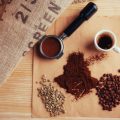1. The Legacy of Coffee in Indian Homes
Coffee in India is more than just a beverage—it is a thread woven into the very fabric of daily life, especially in the southern states. The aroma of freshly brewed filter coffee, known locally as “kaapi,” often signals the start of a new day in countless households. Traditionally, preparing coffee has been an art passed down through generations, with each family cherishing their unique recipe and ritual. The South Indian filter coffee method, which uses a metal filter to brew a strong decoction mixed with hot milk and sugar, stands as a testament to this deep-rooted culture. Beyond its preparation, coffee serves as a social glue—families gather for heartfelt conversations over steaming tumblers, guests are welcomed with a cup, and important decisions are often made at the kitchen table with coffee in hand. This blend of tradition and togetherness makes Indian coffee culture truly distinctive, balancing age-old customs with evolving modern tastes.
2. Traditional Indian Methods of Grinding Coffee
India’s coffee culture is deeply rooted in its rich traditions, and the process of grinding coffee at home has always been more than just a daily task—it is a cherished ritual passed down through generations. Long before electric grinders became common, Indian households relied on age-old tools to prepare their beloved filter coffee or kaapi. Let us explore these traditional methods and understand their cultural significance.
Stone Hand Grinder: The Heart of Indian Homes
The stone hand grinder, known locally as “Sil Batta” or “Ragado,” was a staple in South Indian kitchens. Made from heavy granite, this tool consisted of a flat stone slab (sil) and a cylindrical roller (batta). Coffee beans would be placed on the slab and ground using the roller with rhythmic, circular motions. This method required patience and skill, and many elders fondly recall the aroma that filled the air during early morning grinding sessions.
Chakki: The Traditional Mill
Another popular tool was the “Chakki,” a small, hand-operated mill made from stone or wood. While commonly used for grinding grains, it was also adapted for coffee beans in some regions. The beans were poured into the center, and the top stone was rotated manually to crush them to the desired coarseness. This method brought families together, often with multiple hands helping to turn the chakki during festive mornings or special gatherings.
Comparing Traditional Tools: Sil Batta vs Chakki
| Tool | Main Material | Grinding Style | Coffee Texture | Common Region |
|---|---|---|---|---|
| Sil Batta (Stone Hand Grinder) | Granite Stone | Manual, Circular Motion | Coarse to Medium | South India |
| Chakki (Mill) | Stone/Wood | Rotational Milling | Fine to Medium | North & Central India |
The process of grinding coffee by hand was slow but meditative—a true labour of love. These traditional methods not only enhanced the flavours of the brew but also fostered family bonds and preserved time-honoured customs. Even today, some households continue these rituals as a tribute to their roots, keeping alive the spirit of Indian hospitality and warmth.

3. Modern Coffee Grinding Solutions for the Indian Kitchen
With the rise of specialty coffee culture and global influences, modern grinding methods have made their way into Indian homes. The introduction of electric grinders has been a game-changer for many urban households. Unlike traditional hand-grinding, electric burr grinders and blade grinders offer speed, consistency, and convenience—qualities much appreciated by busy families and working professionals. Brands like Philips, Preethi, and Morphy Richards have tailored their machines to suit Indian preferences and kitchen space constraints.
Another uniquely Indian adaptation is the widespread use of the “mixie”—the ubiquitous blender-mixer found in almost every home. While originally designed for spices, chutneys, and dosa batter, creative Indian coffee lovers have repurposed the mixie to grind fresh coffee beans. Though not as precise as dedicated grinders, it gets the job done for those who crave a quick cup of filter coffee or South Indian kaapi without much fuss.
Globalization has also introduced international equipment such as hand-crank burr grinders and high-end electric models from brands like Baratza and Hario. Some passionate home baristas are investing in these imported gadgets to perfect their brewing technique and explore global coffee trends at home. Yet, even with these modern tools, Indians often adapt them to local tastes—grinding beans finer for decoction-style brewing or coarser for French press experiments with home-grown robusta or chicory blends.
The modern Indian kitchen reflects a harmonious blend of tradition and innovation. Whether its using a trusty mixie or embracing cutting-edge grinders, Indian coffee enthusiasts continue to celebrate their love for fresh-ground coffee while giving each method a uniquely desi twist.
4. Taste & Freshness: Comparing Results
When it comes to enjoying a perfect cup of coffee at home, the method of grinding plays a crucial role in determining the taste, aroma, and overall freshness. Indian households have long relied on traditional grinding techniques, yet modern electric grinders are making their way into kitchens across the country. Let us explore how both methods influence your daily brew and help you decide which one aligns with your preferences.
Traditional Grinding Methods: Flavourful Heritage
Using a stone hand grinder (Silbatta) or mortar and pestle (Haman Dasta) is deeply rooted in Indian culture. These methods require patience and manual effort, but many coffee enthusiasts believe that they release oils gradually, resulting in a richer aroma and authentic flavour profile. The tactile process also allows for a personal connection with every cup brewed.
Modern Electric Grinders: Convenience Meets Consistency
Electric grinders such as blade or burr models offer speed and uniformity. They are ideal for busy mornings when time is limited. Modern grinders ensure even particle size, enhancing extraction and bringing out nuanced flavours—especially in lighter roasts, which are gaining popularity among urban Indian youth. However, rapid grinding can sometimes generate heat, which may slightly impact freshness.
Comparison Table: Traditional vs Modern Grinding Methods
| Aspect | Traditional Methods (Silbatta/Haman Dasta) | Modern Electric Grinders |
|---|---|---|
| Flavour Profile | Earthy, robust; retains natural oils | Crisp, clean; highlights subtle notes |
| Aroma | Intense, aromatic; lingers longer | Fresh but can be less intense due to heat |
| Freshness | Excellent if used immediately after grinding | Very good; minimal exposure to air when done quickly |
| Effort Required | High; hands-on process | Low; push-button convenience |
| Suits Whom? | Lovers of tradition & ritual, those valuing authentic taste | Younger crowd, those valuing speed & consistency |
Which One is Best for You?
If you cherish the nostalgia of Indian tradition and enjoy an earthy cup with bold notes, traditional grinding may suit your palate best. On the other hand, if you prefer convenience without compromising much on flavour—and wish to experiment with newer brewing methods—modern grinders are a smart choice. Ultimately, your perfect cup depends on balancing heritage and innovation according to your lifestyle and taste preferences.
5. Best Practices: Blending Tradition with Convenience
To truly enjoy the rich flavours of Indian coffee, it’s essential to blend time-honoured traditions with the efficiency of modern appliances. Here are some practical tips for every home barista in India who wants the best of both worlds:
Start with High-Quality Beans
Always choose fresh, locally-sourced beans—be it robusta from Karnataka or arabica from Tamil Nadu. Buying whole beans helps retain their aroma and pays homage to the age-old practice of valuing freshness in Indian households.
Embrace Traditional Prepping Methods
Before grinding, consider sun-drying your beans slightly, a common step in many South Indian homes. This can help enhance the natural oils and bring out deeper flavours that are perfect for filter coffee or even a strong cup of kaapi.
Modern Grinding for Consistency
Use an electric burr grinder to achieve a uniform grind size, which is crucial for brewing methods like French press or espresso. Adjust the grind settings depending on whether you’re making filter coffee (medium-coarse) or using a moka pot (fine). Many Indian families now keep both manual and electric grinders to switch as needed.
Mixing Spices with Technology
If you love masala coffee, add freshly ground spices—like cardamom or cinnamon—directly into your grinder with the coffee beans for a balanced blend. Modern grinders ensure the spices are evenly mixed, while still respecting traditional flavour profiles cherished across India.
Brewing Techniques: East Meets West
Brew your coffee using a South Indian filter or a French press, depending on your mood. For extra authenticity, serve in stainless steel tumblers but use modern milk frothers to create café-style foam. This fusion keeps your ritual rooted in tradition while enjoying contemporary convenience.
Final Touch: Customise and Savour
Taste and adjust your brew—add jaggery instead of sugar for a rustic sweetness or experiment with plant-based milks popular in urban Indian kitchens. By blending old-school wisdom with today’s technology, every sip becomes a celebration of India’s evolving coffee culture at home.
6. Indian Coffee Powders & Beans: What to Choose
When exploring the world of coffee at home in India, selecting the right beans or powder is essential for achieving that authentic flavour and aroma. The Indian coffee landscape is rich with unique varieties, each offering distinct notes and characteristics suited for traditional as well as modern grinding methods.
Popular Indian Coffee Varieties
Mysore Nuggets Extra Bold
This celebrated Arabica variety from Karnataka is prized for its large, bold beans and smooth, mild cup. Mysore Nuggets are known for their clean taste, low acidity, and hints of chocolate and floral notes. If you prefer a classic South Indian filter coffee or want to experiment with manual brewing, these beans are an excellent choice.
Arabica & Robusta Blends
Many Indian households enjoy blends of Arabica and Robusta, especially for making strong decoction in a filter or preparing thick kaapi with milk and sugar. Robusta beans, often sourced from Kerala or Tamil Nadu, add body and a robust kick—perfect for those who like their coffee intense.
Choosing Between Beans & Powder
Whole Beans for Freshness
If you have a grinder at home—be it a traditional stone hand grinder or a modern electric burr grinder—whole beans will always yield the freshest cup. Grinding just before brewing preserves aroma and flavour, letting you customise grind size for your preferred method: coarse for French press, medium-fine for filter coffee, or fine for espresso-style stovetop pots.
Coffee Powder for Convenience
Ready-ground coffee powder is widely available across India, from local brands to artisanal roasters. When buying powder, check the roast date and opt for airtight packaging to retain freshness. For traditional South Indian kaapi, look for blends with 10-20% chicory if you enjoy that signature earthy depth.
Pro Tips for Home Selection
- Always buy freshly roasted beans or powder from trusted local shops or specialty stores.
- Store your coffee in an airtight container away from heat and moisture.
- If experimenting with new varieties like Coorg Arabica or Monsoon Malabar, start with small quantities to discover your taste preference.
Whether embracing heritage hand-grinding or using contemporary gadgets, choosing the right Indian beans or powder is the first step towards crafting café-quality coffee at home—rich in tradition yet open to modern flair.


